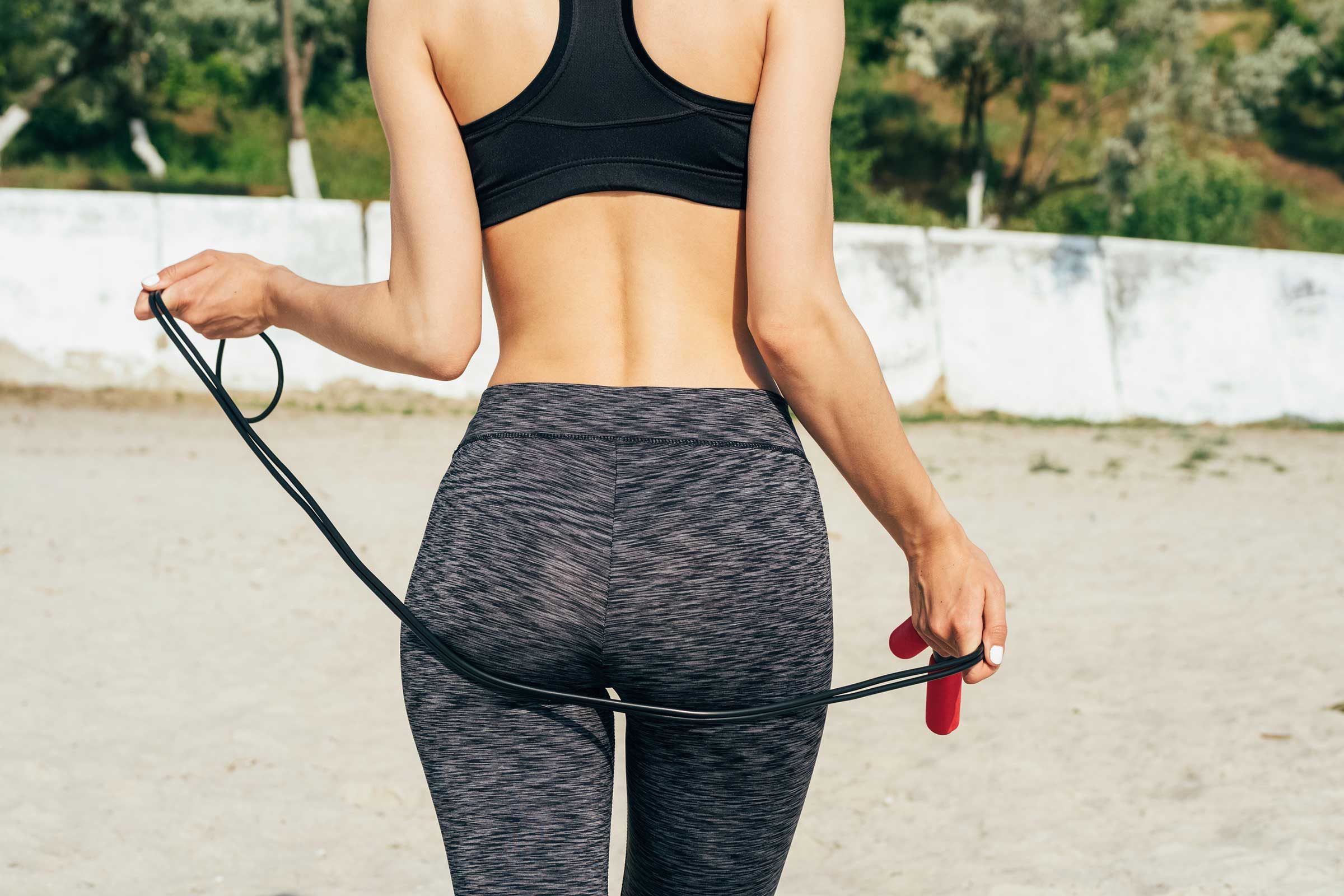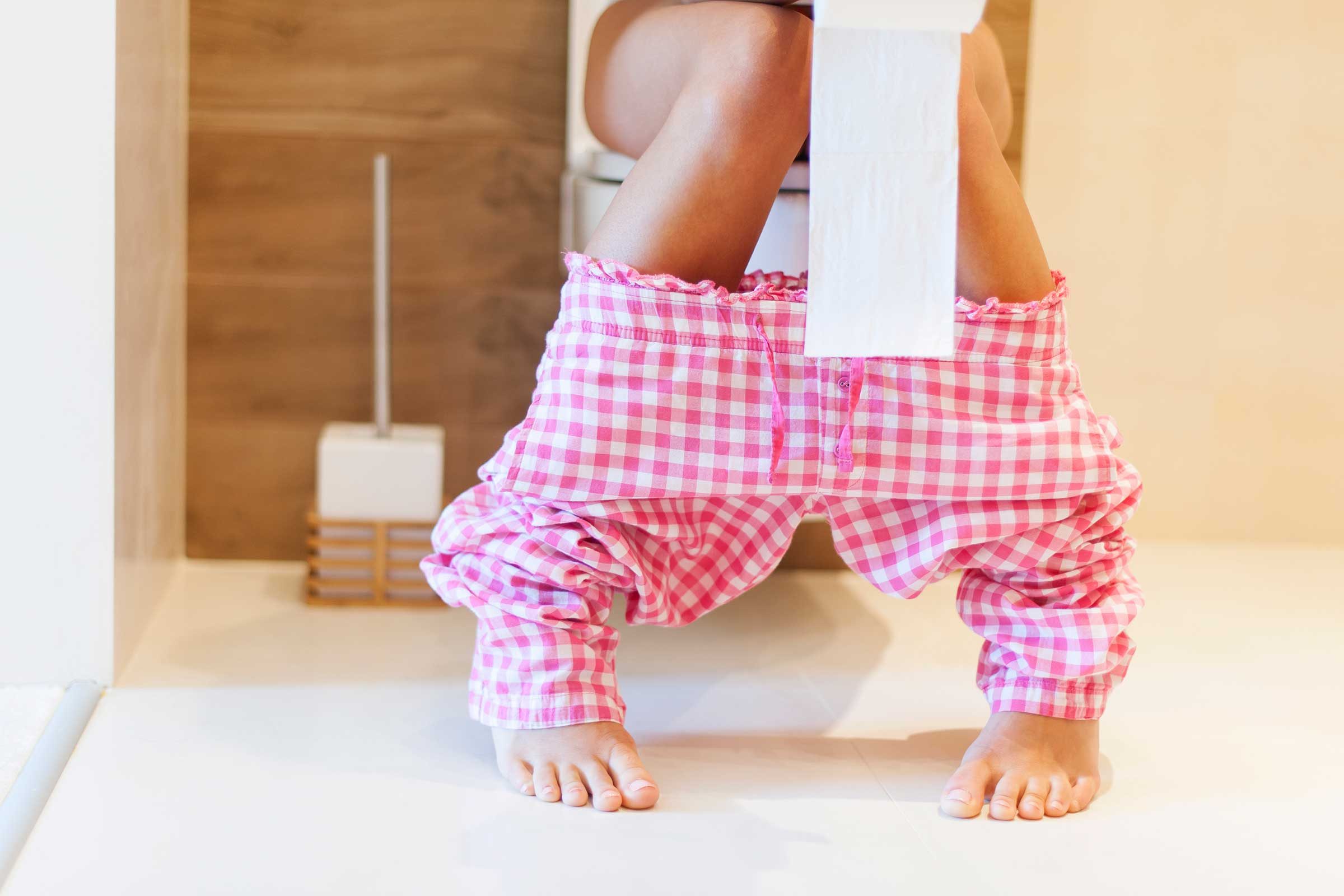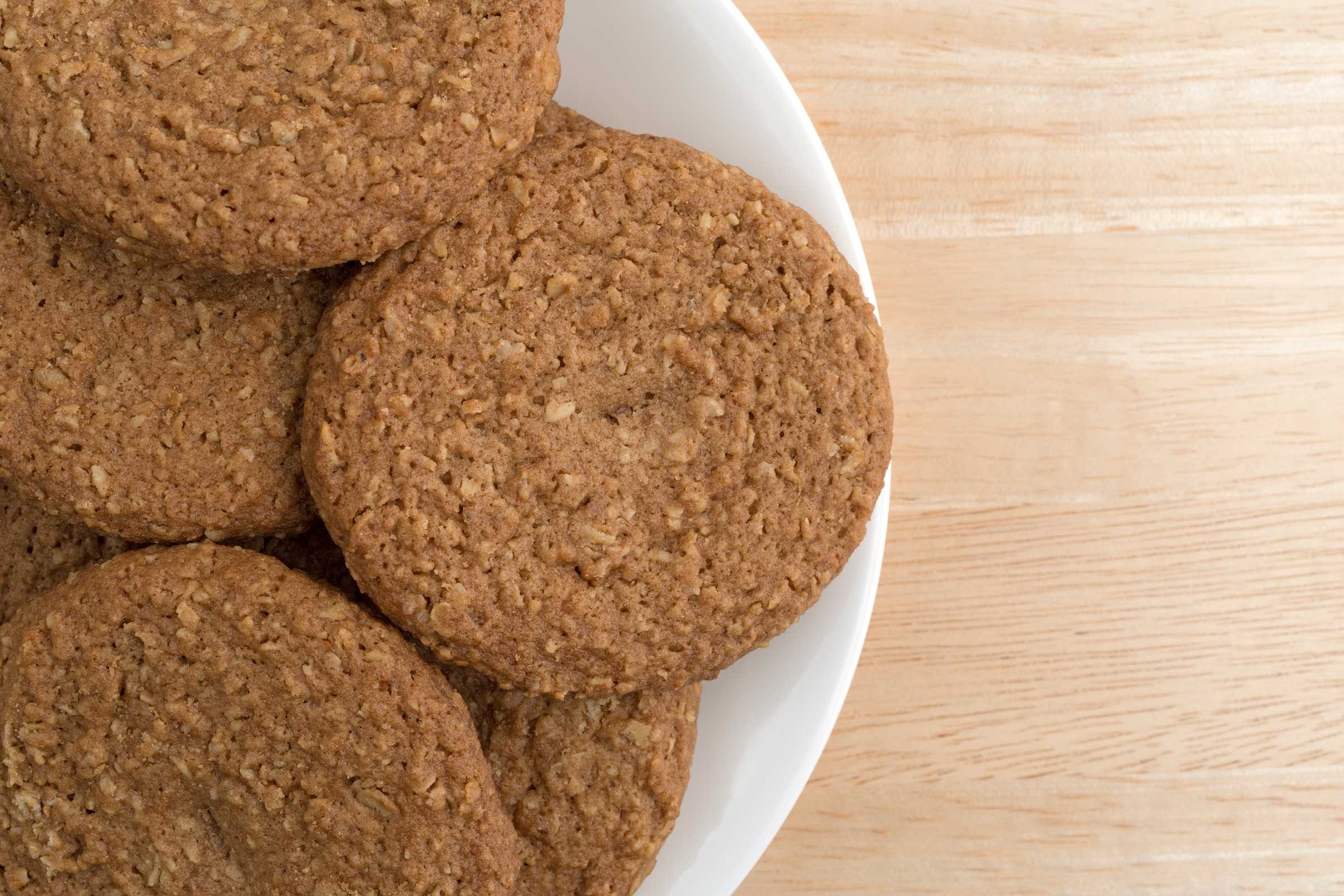
I go by at least 50 different names
Some are proper—like buttocks and glutes; others kid-friendly, like bum, bottom and fanny; some are fancy like derriere, cute like tushy, and a whole lot we can’t say here. Whatever your name of choice, your booty is made up of three muscles: the gluteus medius, which sits on the side of your hip; gluteus minimus (the smallest); and the gluteus maximus—the alpha of the group, for good reason. The Gmax (we didn’t make that up) is actually the largest muscle in the human body and the one responsible for the shape of your rear. (Don’t miss these butt exercises that are better for your glutes than squats.)

I do more than make your jeans look good
When you move your leg backward behind your body—that’s your butt muscles at work. The same is true when you lift your thighs off to the side or turn your toes outward from your hips. These actions allow you to get up, walk, climb stairs, move sideways, crouch down, or stand tall. Weak glutes, from bad posture or not enough use, means other parts of the body have to compensate, says the American Council on Exercise (ACE); over time, this could cause a muscle imbalance and put extra stress on your torso and spine, which may lead to injury. Research shows some of the best moves to strengthen your glutes (and do your jeans justice) include squats, lunges, step-ups, quadruped hip extensions, and four-way hip extensions. (These are the 10 secrets your personal trainer doesn’t want you to know.)

Your pear shape may mean you live longer
That’s because people who store fat at their waist (as opposed to their hips) may be at an increased risk of death, even if they’re not packing on extra pounds, according to a study published in the Annals of Internal Medicine. Researchers tracked more than 15,000 men and women with different BMIs for about 14 years; they found normal-weight, apple-shaped people had a higher risk of dying from heart disease or any cause, when compared to overweight or even obese adults whose fat settles in their hips and thighs. While scientists continue to explore associations between body shape and health, what we do know is that a large waist circumference (35 inches or more in women, 40 or above in men) is a risk factor for metabolic syndrome, a cluster of conditions that occur together, raising the risk of heart disease, diabetes, stroke, and other health problems. (Check out this 10-minute butt workout this celebrity loves.)

Ease up on the laxatives, please…
We get it—it’s been a few days, you’re feeling all kinds of stopped up, and really just want to get things moving. But you may not need to pop a pill: walking, drinking more water, and adding some fiber to your diet (in the form of fresh fruits and veggies or oats) may be enough to help unclog your pipes. Going straight to the laxative every time, and using them for too long, could lead to dependence—meaning your colon loses its ability to do its job properly without an assist. The max on a pooping pill is about seven days; and certain ones, like fiber supplements tend to be gentler on your body than harsh stimulant laxatives, such as Dulcolax and Senokot, that work by triggering intestinal contractions to force stool out. Before using a laxative talk to your doctor to help you determine what’s causing your constipation, and the best way to treat it.

…unless you’re scheduled for a colonoscopy in the morning
Because that nasty, jumbo-sized concoction your doctor gave you to prep with is essentially that—a powerful, liquid laxative that triggers bowel-clearing diarrhea. You don’t have to grin, but it’s worth bearing: when colorectal cancer is found in its early stages and before it spreads, the five-year relative survival rate is about 90 percent, according to the American Cancer Society. A colonoscopy can also spot and remove small polyps, which can develop into colon cancer. Excluding skin cancers, colorectal cancer is the third-most common cancer diagnosed in men and women and the second-leading cause of U.S. cancer deaths. Your first colonoscopy may be at age 50; or earlier, if your risk is higher. Talk to your doctor to determine your screening schedule; and when your time comes, try one of these tips to get the foul-flavored drink down easier: add some ginger or lime; chill it before drinking; or suck it through a straw that’s placed far back on your tongue. Don’t ignore these potential signs of colon cancer.

I hate sugarless gum
Sugar-free cookies, ice cream, and pudding are no better. Yes, they contain fewer calories than the standard versions, but it’s partly because they are sweetened with sorbitol, mannitol, xylitol and other –itols—types of sugar alcohols that your body can’t absorb. As these indigestible sugars reach the colon, bacteria that live in that part of the digestive tract breaks them down, producing gas as a byproduct. Even more exciting: as the sugar alcohols ferment, they attract fluids into the intestinal tract. Gas + water = explosive, fart-y diarrhea for people who overdo sugar-free foods. Lactose intolerance can also cause watery bowels, as might certain viruses or bacteria infections, antibiotics and other medications, and digestive disorders. Find relief with these home remedies for diarrhea.

Pencil-thin poop could mean cancer
Why? Because when there’s a blockage or tumor standing between your colon or rectum and the bowl, the stool has to squeeze by to make its exit. A random case of long and stringy poop could just mean constipation; but if it keeps that form for few weeks, it warrants a call to the doc. So does blood in your stool and rectal bleeding. Learn more about the rectal cancer symtpoms you should know.

Stop texting from the bowl
Mostly because it’s gross; but also it might give you hemorrhoids. You’re sitting position on a toilet bowl doesn’t support your bottom. So when you spend too much time perched on the throne—catching up on texts, checking your Instagram likes, reading the news and your friend’s latest posts—it puts extra pressure on the lower rectum, causing anal or rectal veins to swell or bulge and form into piles (another word for hemorrhoids). Chronic constipation and extra-effort pushing has the same effect. And in case you’re wondering while you read this from the bathroom, your smart phone has more germs than the seat you’re sitting on. These home remedies for hemorrhoids can help you feel better fast.

I appreciate a gentle wipe
Digging deep or getting overzealous with the toilet paper can irritate the skin in there, causing little tears or abrasions, and leaving you with an itchy butt. If you use perfumed toilet paper or flushable wipes to do the deed, they often contain chemicals that dry your skin, making you scratch even more. All your rear really needs is one or two wipes with regular toilet paper (front to back for the ladies); or if needed, moisten the toilet paper with water. Here are more tips on how to wipe your butt (because yes, there’s a wrong way to do it).

I can let about 20 rip a day
Yes, we’re talking about farts; and no, that’s not crazy, it’s actually normal. Gas forms when bacteria in your colon ferment carbohydrates that aren’t digested in your small intestine. The biggest food offenders are often those high in fiber. (Looking at you fruits, veggies, grains, and beans). When excess gas takes the southern route out is called flatus. (Learn why you might want to stop holding in your farts.)

Every 30 minutes, someone’s butt is going under the knife
That’s according to the latest stats from the American Society of Plastic Surgeons. Butt augmentation with fat grafting is the most popular —fat is sucked from other parts of the body and used to pad the rear. Butt lifts (to tone sagging cheeks) and butt implants rounded out the top procedures. Another trend to file in the celebrity-inspired category: anal bleaching. This treatment is exactly what it sounds like, and according to Cosmopolitan, the procedure goes a little something like this: an acid is applied to a just-waxed anus and rubbed in (um, ouch!), then you reapply lotions or gels at home to reach your desired lightness. Needless to say it comes with risks: burning, irritation, and scars; it may even cause damage that restricts the anus, making bowel movements more difficult, and if not done in a proper medical setting, up your risk of herpes or infection. Plus, it’s not permanent: “The darker pigmentation will always come back,” New York City dermatologist Doris Day, MD, told Cosmopolitan. Maybe we just leave this one to the stars? Try these butt exercises that really work.